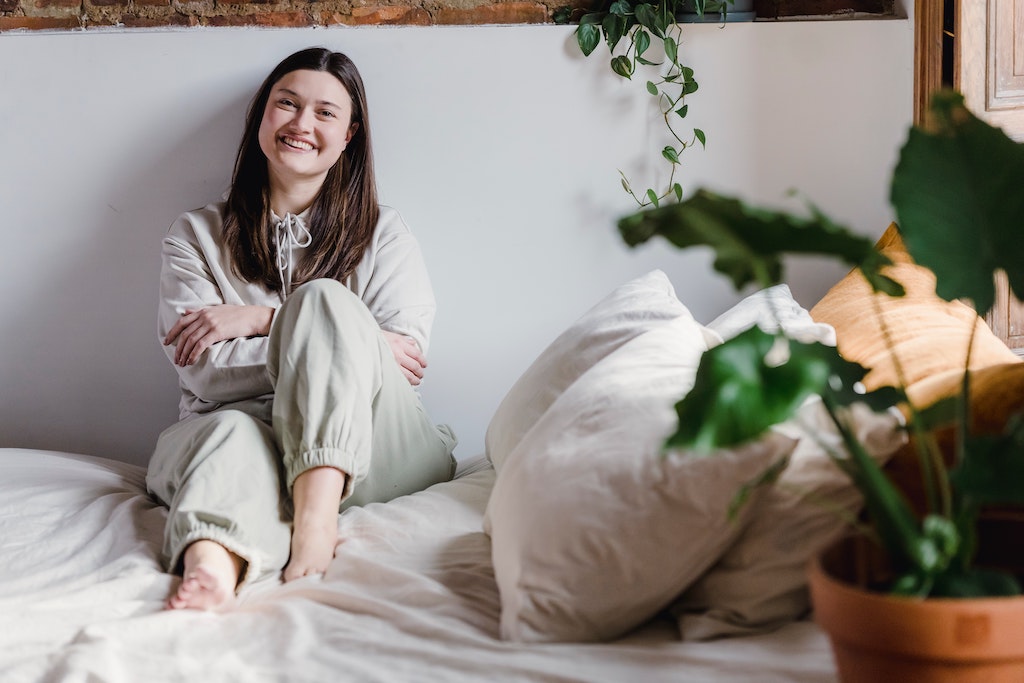
Written by Julian Carter, Guest Writer & Journalist
One of the best ways to revamp your home that will promote relaxation and wellness is to repaint your walls. As we continue to adjust to spending our days at home, it’s incredibly important to reduce extra stress as much as possible. Introducing a new color palette to your living and workspaces can be a game-changer for increasing productivity and improving your daily mood.
Not only is repainting a great vibe enhancer, but it’s also a fun way to spend a weekend! Sprucing up the rooms in your house makes a great low-cost weekend project and will leave you with an all-new, soothing workspace by the time Monday rolls around. This is a worthy investment of your time and money, and you’ll see the long-term benefits for years to come.
Using ideas from color theory, there are several ways to make different color schemes work for your needs and work style. Creating a truly zen space isn’t always easy, but knowing the mental and emotional effects of different colors can make a big difference in the process.

What is color theory, and how can I use it at home?
Color theory examines the ways that different hues can create specific aesthetics and moods. The principles of color theory have been around for centuries, and today’s interior designers still use them to inform their decisions and creative processes. Colors can have different meanings, effects, and influences, and color psychology aims to decode this information.
One of the primary factors of color theory is the classic color wheel. Most of us learn about the color wheel when we’re young, but not everyone understands how we can use it to show the relationships between colors. Color theory identifies three primary colors on the color wheel (red, blue, and yellow), which you can mix to create secondary colors (orange, green, and purple). Mix primary and secondary colors to get various tertiary colors.
Knowing how to analyze the color wheel can come in handy when trying to curate a zen, relaxing space in your home. The colors we choose for our walls can have a major impact on the way we feel and operate from day to day, both in positive and negative ways. When we are surrounded by a certain color for an extended period of time, the exposure and amount of light in that color can influence us emotionally.
As we continue to spend more and more time inside our homes, it’s important to understand which colors around us can help and which can hinder when adjusting to a new normal. Aiming for more subtle, neutral hues can help achieve that calming effect that we seek when undergoing a major repainting job.
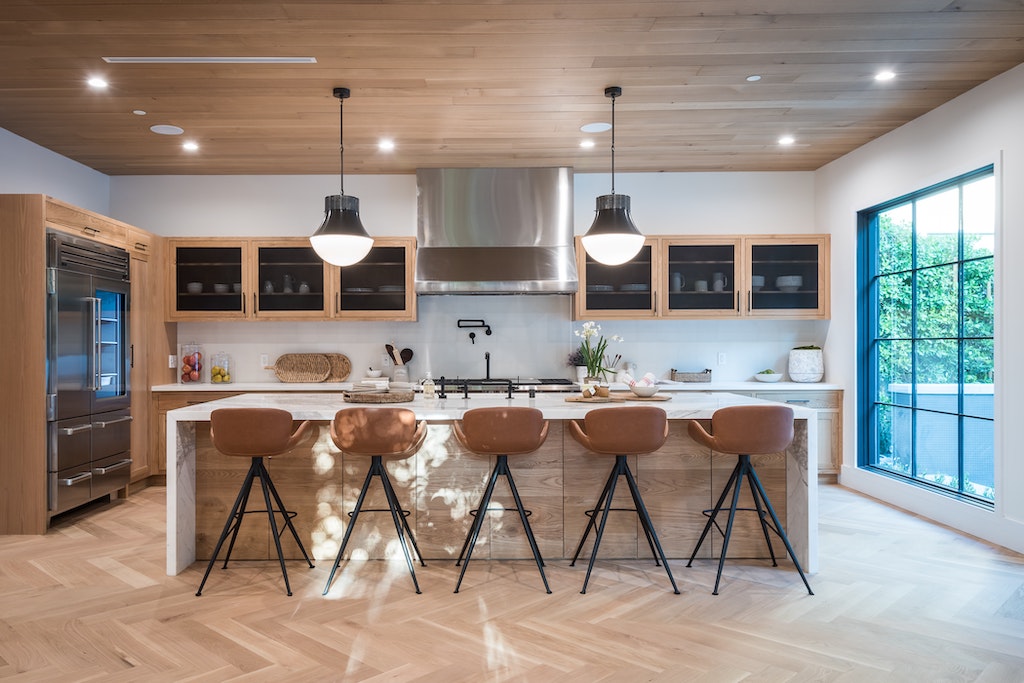
Calming color palettes
When deciding on a color scheme for your new zen space, it’s best to start with one color as your base and then build off from there. Using muted, more neutral shades will help add calmer elements to your design, and then you can match those with other shades that are closer together on the color wheel.
Finding the right color palette for different rooms will allow you to create a consistent design and look throughout the whole house. Designers use the following colors the most when trying to curate a space that is both calming and aesthetically pleasing.
Pink
The color pink offers several different light, soothing shades that can maximize the amount of space there appears to be in the room. Pink’s warmth gives it a sense of ease and positivity, which can offer great energy for any room in the house.
Brighten your bathrooms with the organic glow of a salmon or blush shade of pink. Deeper shades of pink, such as mauve or rose pink, bring calmer feelings to living rooms, bedrooms, and workspaces. Some of the most popular colors from specific brands include “Smoky Salmon” by Sherwin-Williams, “Pale Primrose” by PPG Paints, and “Middleton Pink” by Farrow & Ball.
Purple
One of the most refreshing and versatile colors on the color wheel is the color purple. Often associated with freedom and revitalization, lighter purple especially can bring an authentic feeling to your zen space. Many say that purple makes a great color for areas where you’ll be doing work and thinking, as it is known to encourage deep thought, spirituality, and reflection.
From an interior design perspective, it’s best to use lighter shades so that your space is relaxing and stimulating, but not too intense. Purples are best used in office spaces, libraries or studies, and bedrooms. Explore different popular shades like Sherman-Williams’ “Mythical” or Valspar’s “Sassy Lilac.”
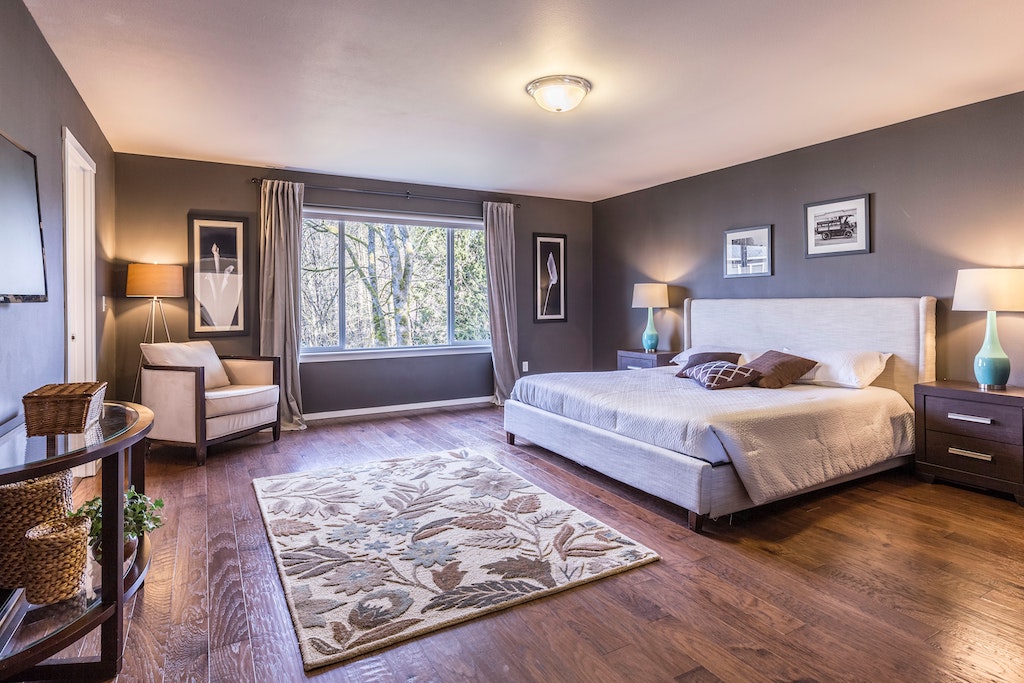
Gray
The ultimate comforting neutral color schemes are those based on the color gray. Some consider gray to be dreary or unexciting, but when used correctly, grays can add unique elements of grace and relaxation to nearly any room in your home. The cooler look of gray hues allows for a peaceful energy in your design while giving way for any accents or notable decorations to truly stand out.
The elegant nature of gray makes it perfect for spaces where people will congregate and move through, such as dining rooms, hallways, and living rooms. Valspar’s “Gravity” and Benjamin Moore’s “Stormy Sky” are just a couple of the most popular shades of gray used when repainting a home.
Blue
Shades of blue offer versatility like no other when it comes to designing a calming home and work environment. Both darker and lighter shades of blue can provide benefits to your creative vision. Calm light blues can add elements of relaxation to your decor, while dark and vivid blues encourage productivity and emphasize cool tones in rooms with a lot of natural light.
Given that blue has so many uses, you can level up just about any room in your house with a blue color palette. Many also associate the color with cleanliness and a fresh start, so it’s even great to use for laundry rooms and bathrooms. Some of the best and most calming blues in use are “Dreamy Blue” by Benjamin Moore and “Pacific Pleasure” by Behr.
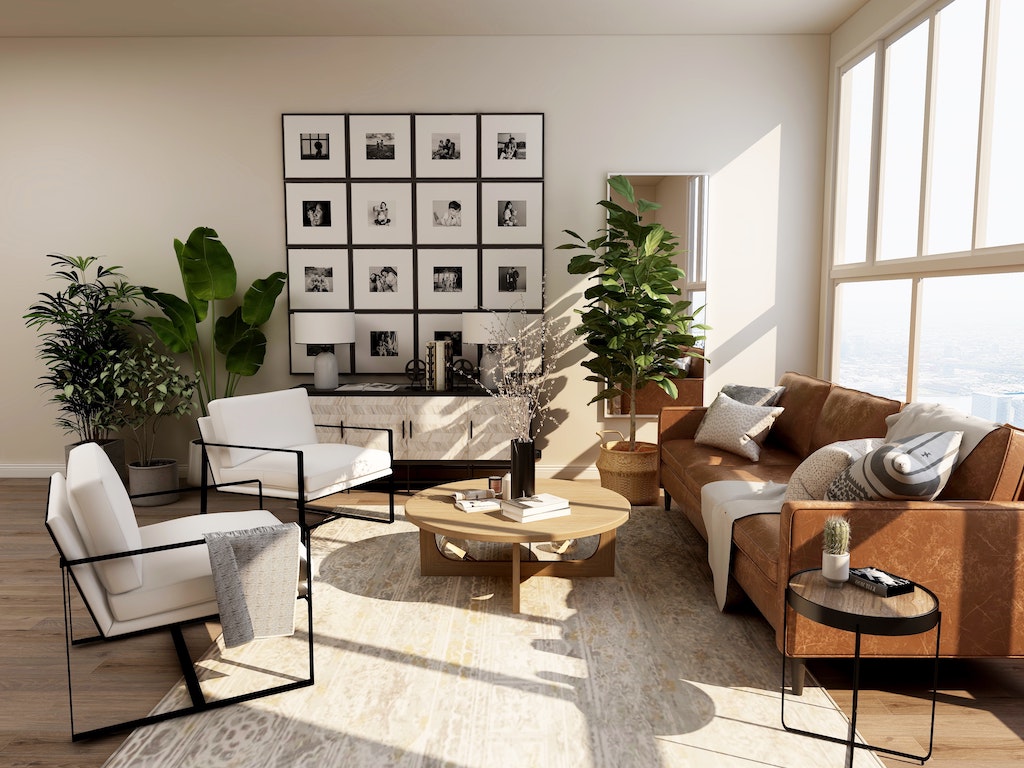
Beige/Brown
Though many are quick to write it off as boring, we subconsciously appreciate neutral browns and beiges for their restful comforting qualities. Brown combines the warmer hints of red and yellow with the soothing neutral aspects of different shades of gray.
This results in a vibe that is both welcoming and humble, which is perfect for more social areas like office spaces and living rooms. Different shades of brown like tan and taupe are also great for bedrooms and family rooms. Try out “Toffee Crunch” or “Belgian Sweet” by Behr for some of the most common and successful shades of brown.
Green
We often associate the color green with peace and rejuvenation due to its connection with nature. Incorporating shades of green into your home design can help create a more positive and contemplative environment, especially when using sage and mint blue-greens. You’ll want to aim for lighter, more muted hues to avoid oversaturation or anything too striking.
Since it’s so impactful, green is a great color to incorporate into rooms where you spend a lot of your time throughout the day. This is why it’s most often used in bedrooms and kitchens. Behr’s “Light Mint” and “Marsh Fern” and Farrow & Ball’s “Lichen” are great starting places for working green into your home’s color palette.
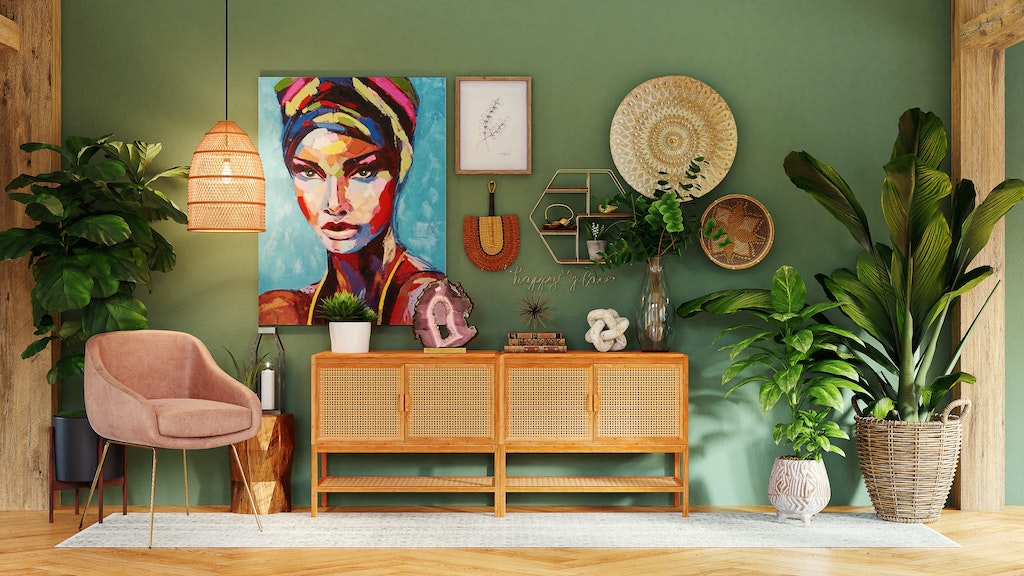
Science-backed ways to create a zen home
While changing up the color scheme can add a much-needed visual boost to your zen spaces, there are several other ways to do this as well. You can reduce the risk of stress even further by adding in other sensory elements, many of which are cost-effective and easy to implement. Follow these science-backed tips for even more ways to level up the relaxation factor in your home.
1. Purify your air with plants and greenery
Adding plants to various rooms throughout your home can serve as a wonderful addition to your decor. Plants offer a great boost to the immune system, and they can help eliminate harmful toxins from the air. This is an important part of curating an organic, healthy space that encourages regular cleaning and upkeep practices.
Having plants around can also be an important mood booster and increase productivity. Having something to take care of and keep up with regularly can inspire productivity and responsibility and keep you accountable. Plus, houseplants are aesthetically pleasing and add to the calming nature of your living space.
2. Opt for minimalist design
When a house is overcrowded or busy in interior design, it can be easy to become overwhelmed. This is why minimalism is your friend when designing your home. Living and working spaces that are more open and spacious allow you to move around more freely and encourage peace of mind.
3. Utilize natural light
Natural light plays a key role in keeping your Circadian rhythm in check, as your body uses it to gauge what time it is and when it’s time to rest. Because of this, you’ll want to design your home in a way that maximizes the amount of natural light entering your spaces. This is especially important now that many workplaces are going remote and you may not be spending as much time outside as you used to.
To increase your exposure to sunlight when inside your home, implement curtains wisely throughout the design process. Make it as easy to let the light in as possible while still having the option for more privacy with the curtains closed.
4. Set your thermostat
Keeping your home’s temperature well-regulated is key in staying productive and encouraging wellness. Now that many of us are working from home, it’s important to be as comfortable as possible to keep morale high and adjust to the new work environment. Set your thermostat at around 72 degrees for optimal calmness and a strong workflow.
If you’re finding it difficult to hit that sweet spot with your home’s temperature, keep comfortable blankets around the house. Guests will appreciate this attention to detail when entering your space since not everyone has the same temperature preferences.
5. Bring in textures as accents
Designing a calming environment doesn’t stop at just visual aspects. It’s important to incorporate elements of touch as well, as tactile objects can play a big part in reducing stress. For example, area rugs can encourage tranquility and offer a soft element to spaces with hardwood or tile floors.
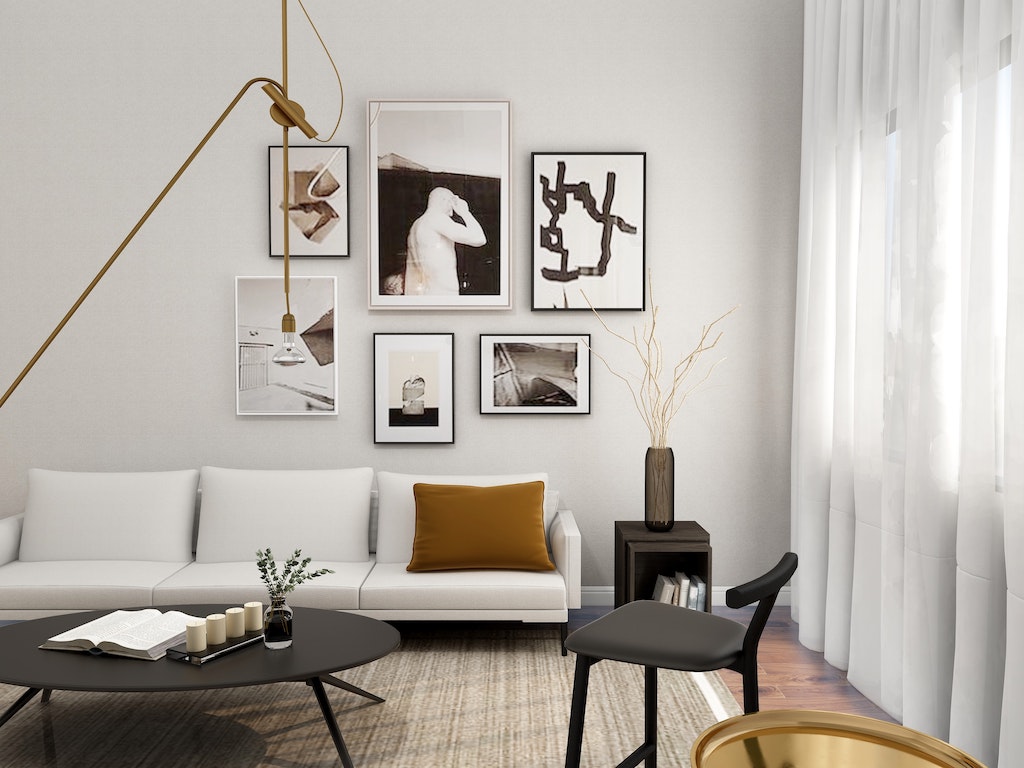
6. Maintain an organized and clutter-free home
One of the fundamentals of curating a relaxing space is organization. Freeing your home of clutter will make a huge difference in your mindset each day, and you’ll find yourself less stressed when you have a lot on your mind. A clean office space or bedroom can completely change the way you approach your work and lifestyle routines.
There is no right answer when it comes to organizing your personal spaces, as everyone’s preferences are different. If you find that a certain method of organization helps you stay calm, implement that throughout the whole house. Your top priority should be your own wellness.
7. Position mirrors to maximize natural light
Another great way to use natural light to your advantage is by including mirrors in your room decor. Mirrors allow the sunlight to reflect to different parts of the room that may not have windows. Plus, the mirror’s design, as well as the way you position the mirror itself, can help spruce up the aesthetic of the room.
Mirrors, by nature, encourage reflection and can make a room feel even more spacious. Brightening creative or professional spaces with mirrors is a great way to improve morale and encourage wellness where there might otherwise be stress.
8. Display small indoor water fountains
What’s more soothing than the natural sound of flowing water? Adding smaller fountains meant for indoor spaces can bring the most relaxing element in nature into the comfort of your home. The background noise of a running fountain will make it easy to relax and make important tasks feel less rushed.
Indoor fountains are also a smart way to humidify your space. Sometimes, homes can get dry, making spaces that are supposed to be uncomfortable exactly the opposite. A fountain can add some moisture into the air that will make it easier to cool down and unwind at the end of a long day.
Switching up your home’s color scheme and other changes to your decor will not only add to your aesthetic, but will also have a major impact on your own wellness. Once you’ve actively taken the necessary steps to curate a truly relaxing area, you’ll immediately see the benefits it can bring to your lifestyle and working experience. Explore the visual from the experts at HomeAdvisor for an even more detailed guide on building a zen space!
About the Author
Julian Carter is a writer and journalist specializing in a variety of areas, including health and lifestyle. He enjoys writing about new and exciting revelations within different industries. You can view Julian’s work here or find him on Twitter @JulianBCarter.






Leave a reply